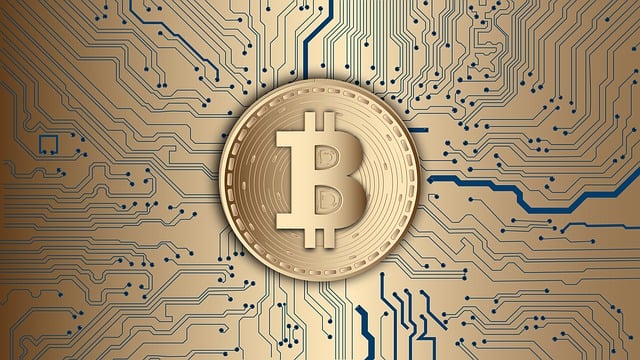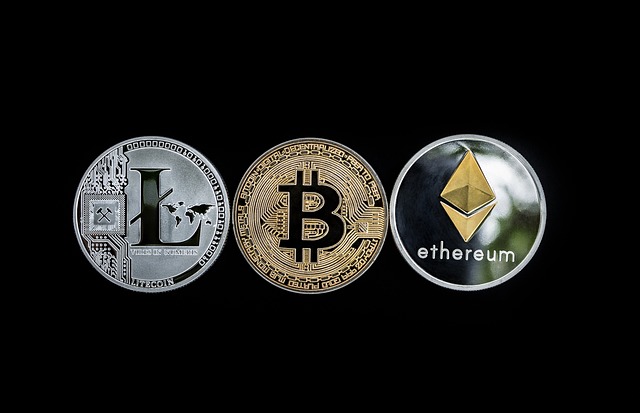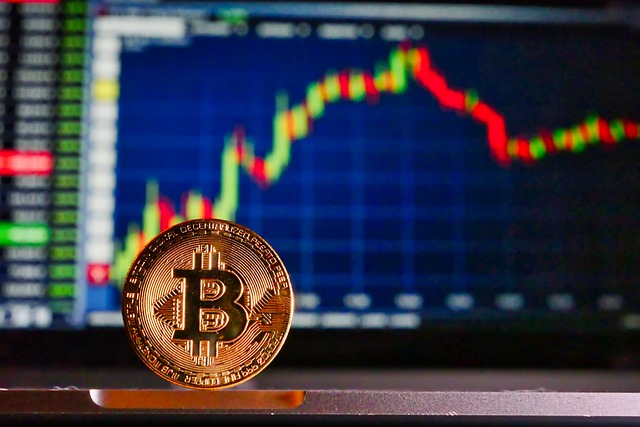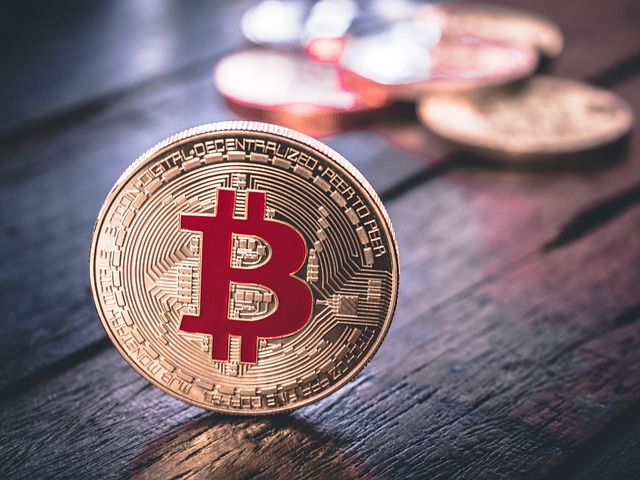The impact of inflation on cryptocurrency markets is a complex and significant dynamic. As traditional fiat currencies lose value due to inflation, investors increasingly turn to cryptocurrencies as a hedge, driving up demand and potentially prices. This relationship is characterized by volatility in crypto markets, with investor expectations playing a crucial role. Central bank actions like raising interest rates or increasing the money supply can further exacerbate this volatility. Understanding historical correlations between inflation and crypto markets is vital for evaluating their resilience during economic transitions. To successfully navigate inflative environments, investors should strategically diversify their portfolios, allocate to stablecoins, practice dollar-cost averaging, and stay informed about regulatory changes.
“Unraveling the intricate relationship between inflation and cryptocurrency markets is paramount in today’s economic landscape. This article delves into the sensitive dynamics of how inflation influences crypto asset prices, adoption rates, and investment strategies.
We explore the direct effects of inflation on these emerging markets, analyze historical correlations, and offer insights into navigating crypto investments during periods of rising inflation. By understanding these factors, investors can make informed decisions in a rapidly evolving digital asset environment.”
- Understanding Cryptocurrency Markets and Their Sensitivity to Inflation
- The Direct Effect of Inflation on Crypto Asset Prices
- How Inflationary Policies Impact Cryptocurrency Adoption and Investment
- Exploring Historical Correlations: Inflation vs. Crypto Market Performance
- Strategies for Navigating Crypto Investments in an Inflative Environment
Understanding Cryptocurrency Markets and Their Sensitivity to Inflation

Cryptocurrency markets, much like traditional financial markets, are sensitive to economic conditions, and one factor that significantly influences their behavior is inflation. The impact of inflation on crypto markets is profound; as the value of fiat currencies decreases due to rising prices, investors often turn to cryptocurrencies as a hedge against inflation. This shift in investor sentiment can lead to increased demand for digital assets, potentially driving up their prices.
The volatility inherent in cryptocurrency markets makes them even more susceptible to the effects of inflation. While this volatility offers both risks and opportunities, it underscores the market’s sensitivity to macroeconomic shifts. As inflation erodes the purchasing power of traditional currencies, cryptocurrencies’ perceived value as a store of value or a means of exchange can rise, attracting more investors seeking protection against rising prices.
The Direct Effect of Inflation on Crypto Asset Prices

Inflation, a widely recognized economic phenomenon, exerts a direct and significant influence on various asset classes, including cryptocurrencies. When inflation rises, the purchasing power of a nation’s currency decreases, leading to a direct impact on crypto asset prices. Investors often view cryptocurrencies as a hedge against inflation due to their decentralized nature and limited supply in some cases, such as Bitcoin. As traditional fiat currencies lose value, investors may turn to cryptocurrencies as a means of preserving wealth, driving up demand and potentially increasing prices.
The relationship between inflation and crypto markets is complex. While cryptocurrencies can offer protection against inflation, sudden spikes in inflation can also lead to increased volatility in the market. Investors’ expectations about future economic conditions play a pivotal role, as they influence investment decisions. For instance, heightened inflation fears might prompt investors to sell fiat currencies for more stable assets like Bitcoin, causing price appreciation. Understanding this dynamic is crucial for navigating crypto markets during periods of elevated inflation.
How Inflationary Policies Impact Cryptocurrency Adoption and Investment

In the realm of cryptocurrency, the impact of inflationary policies is a topic of growing interest. As traditional fiat currencies lose purchasing power due to rising prices, investors often turn to digital assets like cryptocurrencies as a hedge against inflation. The theory is that these decentralized currencies, with their limited supplies and borderless access, can offer protection against the eroding effects of inflation. However, inflationary policies can also significantly influence crypto markets. Central banks’ decisions to increase interest rates or print more money to combat economic downturns can trigger volatility in cryptocurrency adoption and investment.
The impact is twofold. On one hand, higher inflation may drive demand for cryptocurrencies, as investors seek alternative stores of value. Conversely, aggressive inflation policies could lead to regulatory changes or increased scrutiny, potentially hindering the growth and acceptance of digital assets. In today’s digital era, understanding the intricate relationship between inflationary measures and crypto markets is crucial for both investors and policymakers alike, as it can shape the future trajectory of these innovative financial instruments.
Exploring Historical Correlations: Inflation vs. Crypto Market Performance

Throughout history, inflation has served as a barometer for economic health and stability. When inflation rises, purchasing power decreases, leading consumers to spend less and save more. This dynamic has profound implications for financial markets, including the crypto space. The impact of inflation on crypto market performance is a topic of growing interest among investors and economists alike. Historically, periods of high inflation have often coincided with volatility in traditional asset classes, yet the relationship between inflation and cryptocurrencies remains complex.
One key correlation to explore is how rising inflation affects investor sentiment towards digital assets. As inflation erodes the value of fiat currencies, some investors may turn to crypto as a hedge against inflation, driving up demand and potentially boosting market prices. Conversely, during times of economic stability and low inflation, investment flows might shift towards more traditional financial instruments, leading to reduced crypto adoption and price fluctuations. Understanding these historical correlations is crucial for gauging the resilience of cryptocurrencies in the face of economic shifts, particularly as global monetary policies continue to evolve.
Strategies for Navigating Crypto Investments in an Inflative Environment

In an environment where inflation is on the rise, navigating crypto investments requires a strategic approach. The impact of inflation on crypto markets can be significant, as volatile price fluctuations become more common. Investors should focus on diversifying their portfolios to spread risk effectively. Holding a range of cryptocurrencies across different sectors and market capitalizations can help mitigate the effects of inflation. Additionally, keeping a close eye on regulatory changes and adapting strategies accordingly is vital.
To enhance resilience, consider allocating a portion of your portfolio to stablecoins, which are designed to maintain a stable value, often pegged to fiat currencies like the US Dollar. These assets offer a safe haven during economic uncertainty and can provide stability in an inflative environment. Furthermore, investors might explore strategies like dollar-cost averaging (DCA), where investments are made at regular intervals regardless of price, which averages out costs over time. This method proves beneficial when navigating crypto’s volatile nature during inflationary periods.
The impact of inflation on crypto markets is a complex interplay between economic theories and innovative financial technologies. As we’ve explored, high inflation rates often lead to increased volatility in cryptocurrency asset prices, affecting both investors and adopters. However, the same factors that make crypto susceptible to inflation’s effects—decentralization, limited supply, and global accessibility—also offer potential solutions for navigating these uncertain times. By understanding historical correlations and implementing strategic responses, investors can navigate an inflative environment with a nuanced approach tailored to the unique dynamics of the cryptocurrency market.
